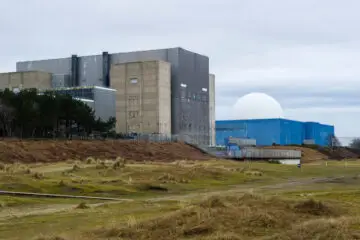Over 30 years ago, we founded Fish Guidance Systems (FGS) to protect fish from human-made infrastructure. Our systems, which can include sound, light and bubbles, deter a wide range of fish species from hazardous environments such as hydroelectric facilities, power stations and other waterside infrastructure projects.
Here’s a breakdown of how long it takes to develop an FGS system based on Sound Projector counts:
Leased Systems: A Few Weeks
Leased systems cater to clients requiring rapid deployment. The fastest option is leasing an FGS system; we can set it up within a few weeks, making it ideal for temporary installations or urgent requirements.
Small-Scale Systems (<30 Sound Projectors): 1-3 Months
We can develop and deploy smaller projects, typically under 30 Sound Projectors, within a month. These systems typically are standalone, needing minimal customisation, and we can install them using our existing technology and infrastructure.
Medium-Sized Systems (30-75 Sound Projectors): 3-6 Months
For projects requiring 30 to 75 units, we factor in design customisation, parts manufacturing, and installation. Medium-scale systems often involve a higher integration with the client’s operational needs, requiring additional testing and calibration.
Large Systems (76-100 Sound Projectors): 6-9 Months
A system of this scale demands extensive planning, component production, and on-site deployment. The 6-9 month timeline includes environmental impact assessments, engineering specifications, and regulatory compliance checks. We often tailor these systems for energy sector clients and large-scale industrial applications.
Major Installations (101+ Sound Projectors): 9-12 Months
The most complex FGS projects, those involving 101 or more units, can take up to a year to develop and implement. These systems are usually custom-engineered, requiring extensive research, permitting, and integration with multiple stakeholders. Large-scale projects, such as those for hydroelectric dams and thermal power plants, often fall into this category.
Factors Affecting Development Time
Several variables influence the timeline for an FGS system, but even with the factors below, the system can be tested and put online within 12 months.
- Regulatory Approvals: Environmental permits and compliance checks can add weeks or months to the process.
- Site Conditions: The nature of the installation environment (e.g., offshore, riverine, industrial) affects construction complexity.
- Client Requirements: Bespoke designs take longer to engineer and validate.
- Manufacturing Lead Time: The procurement of specialized components affects the overall schedule.
- Testing & Calibration: Ensuring system efficacy before commissioning is crucial, particularly for larger installations.
FGS systems are not one-size-fits-all solutions. The time required to develop and deploy a system depends on the project’s scale, complexity, and regulatory landscape. Thankfully, the team at FGS meets these challenges through thirty years of research, development, deployment and project management experience
For more information, visit fgs.world, or email [email protected]
